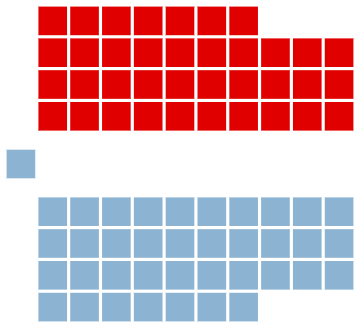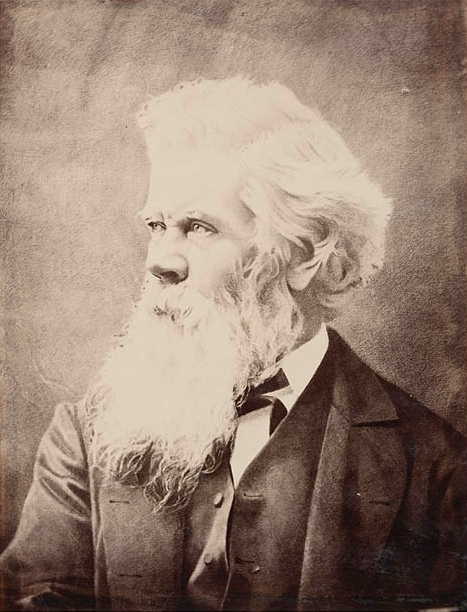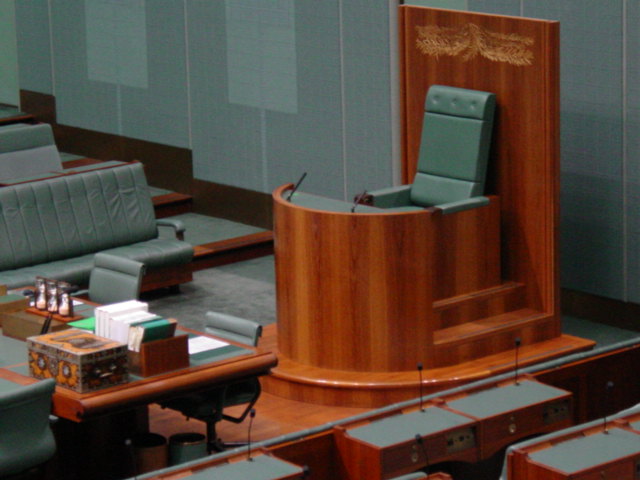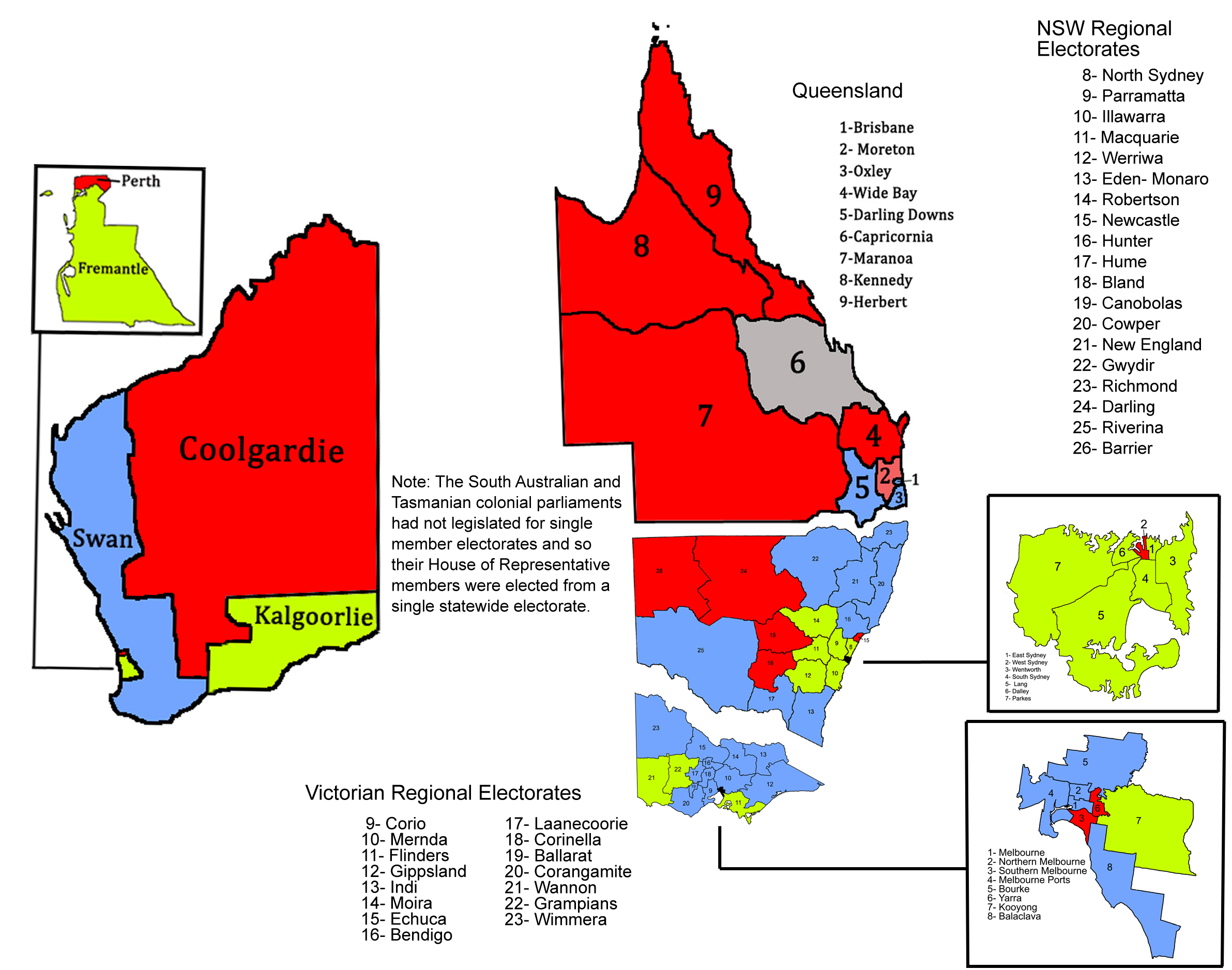|
John Chanter
John Moore Chanter (11 February 1845 – 9 March 1931) was an Australian politician, farmer and commission agent. He was a member of the Protectionist Party, as well as the Australian Labor Party and the Nationalist Party of Australia. Early life Chanter was born in Adelaide, South Australia, and was the son of John Chanter and Elizabeth née Moore. He was educated at the Albert House Academy and the Collegiate School of St Peter in Adelaide, as well as at the Model Training Institution when his family relocated to Melbourne in 1856. Chanter was a storekeeper and farmer and in 1878, he became the first secretary of the Victorian Farmers' Union. In 1881 he moved to Moama, New South Wales, as an auctioneer and commission agent where he was prominent in establishing the Australian Natives' Association in New South Wales, and became its first president in 1900. Colonial politics Chanter's political career began in 1885 when he was elected to the New South Wales Legislative Ass ... [...More Info...] [...Related Items...] OR: [Wikipedia] [Google] [Baidu] |
The Honourable
''The Honourable'' (British English) or ''The Honorable'' (American English; see spelling differences) (abbreviation: ''Hon.'', ''Hon'ble'', or variations) is an honorific style that is used as a prefix before the names or titles of certain people, usually with official governmental or diplomatic positions. Use by governments International diplomacy In international diplomatic relations, representatives of foreign states are often styled as ''The Honourable''. Deputy chiefs of mission, , consuls-general and consuls are always given the style. All heads of consular posts, whether they are honorary or career postholders, are accorded the style according to the State Department of the United States. However, the style ''Excellency'' instead of ''The Honourable'' is used for ambassadors and high commissioners. Africa The Congo In the Democratic Republic of the Congo, the prefix 'Honourable' or 'Hon.' is used for members of both chambers of the Parliament of the Democratic Repu ... [...More Info...] [...Related Items...] OR: [Wikipedia] [Google] [Baidu] |
Electoral District Of Murray
Murray (The Murray until 1910) is an electoral district in the Australian state of New South Wales. Murray is a regional electorate lying in the southwestern corner of the state. It encompasses several local government areas, namely Wentworth Shire, Balranald Shire, Carrathool Shire, the City of Griffith, Leeton Shire, Hay Shire, Murrumbidgee Shire, Murray River Council, Edward River Council and Berrigan Shire. History Murray was a single-member electorate from 1859 to 1880, returning two members from 1880 to 1894, returning to a single member electorate from 1894 to 1920. The district created in 1859 included the districts surrounding the towns of Deniliquin, Moama and Moulamein. It was substantially re-created in 1904 as a result of the 1903 New South Wales referendum, which required the number of members of the Legislative Assembly to be reduced from 125 to 90. The member for The Murray from 1894 to 1904 was James Hayes who was appointed to the Legislative Council and di ... [...More Info...] [...Related Items...] OR: [Wikipedia] [Google] [Baidu] |
1913 Australian Federal Election
The 1913 Australian federal election was held in Australia on 31 May 1913. All 75 seats in the House of Representatives, and 18 of the 36 seats in the Senate were up for election. The incumbent Labor Party, led by Prime Minister Andrew Fisher, was defeated by the opposition Commonwealth Liberal Party under Joseph Cook. The new government had a majority of just a single seat, and held a minority of seats in the Senate. It would last only 15 months, suffering defeat at the 1914 election. The 1913 election was held in conjunction with six referendum questions, none of which were carried. According to David Day, Andrew Fisher's biographer, "it was probably the timing of the referenda that was most responsible for the disappointing election result" for the Labor Party. Results House of Representatives ---- ;Notes * Three members were elected unopposed – one Liberal and two Labor. Senate Seats changing hands * Members listed in italics did not contest their seat at t ... [...More Info...] [...Related Items...] OR: [Wikipedia] [Google] [Baidu] |
Commonwealth Liberal Party
The Liberal Party was a parliamentary party in Australian federal politics between 1909 and 1917. The party was founded under Alfred Deakin's leadership as a merger of the Protectionist Party and Anti-Socialist Party, an event known as the Fusion. The creation of the party marked the emergence of a two-party system, replacing the unstable multi-party system that arose after Federation in 1901. The first three federal elections produced hung parliaments, with the Protectionists, Free Traders, and Australian Labor Party (ALP) forming a series of minority governments. Free Trade leader George Reid envisioned an anti-socialist alliance of liberals and conservatives, rebranding his party accordingly, and his views were eventually adopted by his Protectionist counterpart Deakin. Objections towards Reid saw Deakin take the lead in coordinating the merger. The Fusion was controversial, with some of his radical supporters regarding it as a betrayal and choosing to sit as independents ... [...More Info...] [...Related Items...] OR: [Wikipedia] [Google] [Baidu] |
William Lyne
Sir William John Lyne KCMG (6 April 1844 – 3 August 1913) was an Australian politician who served as Premier of New South Wales from 1899 to 1901, and later as a federal cabinet minister under Edmund Barton and Alfred Deakin. He is best known as the subject of the so called " Hopetoun Blunder", unexpectedly being asked to serve as the first Prime Minister of Australia but proving unable to form a government. Lyne was born in Van Diemen's Land, the son of a pastoral farmer. When he was 20, he and cousin took up a sheep station in North West Queensland. However, he moved back home after a few years and found work in local government. Lyne moved to New South Wales in 1875, buying a station near Albury and becoming prominent in community affairs. He was elected to the colonial Legislative Assembly in 1880, and first entered cabinet in 1885 under George Dibbs. He was a member of the Protectionist Party, and a major opponent of free-traders Henry Parkes and George Reid. Lyne was ... [...More Info...] [...Related Items...] OR: [Wikipedia] [Google] [Baidu] |
High Court Of Australia
The High Court of Australia is Australia's apex court. It exercises Original jurisdiction, original and appellate jurisdiction on matters specified within Constitution of Australia, Australia's Constitution. The High Court was established following passage of the ''Judiciary Act 1903''. It derives its authority from Chapter III of the Australian Constitution, which vests it responsibility for the judiciary, judicial power of the Commonwealth. Important legal instruments pertaining to the High Court include the ''Judiciary Act 1903'' and the ''High Court of Australia Act 1979''.. Its bench is composed of seven justices, including a Chief Justice of Australia, Chief Justice, currently Susan Kiefel. Justices of the High Court are appointed by the Governor-General of Australia, Governor-General on the Advice (constitutional law), advice of the Prime Minister of Australia, Prime Minister and are appointed permanently until their mandatory retirement at age 70, unless they retire ea ... [...More Info...] [...Related Items...] OR: [Wikipedia] [Google] [Baidu] |
1904 Riverina By-election
A by-election was held for the Australian House of Representatives seat of Riverina on 18 May 1904. This was triggered after the result at the 1903 election, which had seen Free Trade candidate Robert Blackwood narrowly defeat Protectionist MP John Chanter John Moore Chanter (11 February 1845 – 9 March 1931) was an Australian politician, farmer and commission agent. He was a member of the Protectionist Party, as well as the Australian Labor Party and the Nationalist Party of Australia. Ear ..., was declared void due to allegations of electoral irregularities. and . At the by-election Chanter defeated Blackwood. Results References {{Aus by-elections 2nd parl 1904 elections in Australia New South Wales federal by-elections 1900s in New South Wales ... [...More Info...] [...Related Items...] OR: [Wikipedia] [Google] [Baidu] |
Free Trade Party
The Free Trade Party which was officially known as the Australian Free Trade and Liberal Association, also referred to as the Revenue Tariff Party in some states, was an Australian political party, formally organised in 1887 in New South Wales, in time for the 1887 colony election, which the party won. It advocated the abolition of protectionism, especially protective tariffs and other restrictions on trade, arguing that this would create greater prosperity for all. However, many members also advocated use of minimal tariffs for government revenue purposes only. Its most prominent leader was George Reid, who led the Reid Government as the fourth Prime Minister of Australia (1904–05). In New South Wales it was succeeded by the Liberal and Reform Association in 1902, and federally by the Anti-Socialist Party in 1906. In 1909, the Anti-Socialist Party merged with the Protectionist Party to form the Commonwealth Liberal Party. History The party was centred on New South Wales, w ... [...More Info...] [...Related Items...] OR: [Wikipedia] [Google] [Baidu] |
1903 Australian Federal Election
The 1903 Australian federal election was held in Australia on 16 December 1903. All 75 seats in the House of Representatives, and 19 of the 36 seats in the Senate were up for election. The incumbent Protectionist Party minority government led by Prime Minister Alfred Deakin retained the most House of Representatives seats of the three parties and retained government with the parliamentary support of the Labour Party led by Chris Watson. The Free Trade Party led by George Reid remained in opposition. The election outcome saw a finely balanced House of Representatives, with the three parties each holding around a third of seats − the Protectionists on 26 (−5), the Free Traders on 24 (−4) and Labour on 22 (+7). This term of parliament saw no changes in any party leadership but did see very significant and prolonged debates on contentious issues − the Protectionist minority government fell in April 1904 to Labour, while the Labour minority government fell in August 1904 to ... [...More Info...] [...Related Items...] OR: [Wikipedia] [Google] [Baidu] |
Chairman Of Committees (Australian House Of Representatives)
The Speaker of the House of Representatives is the presiding officer of the House of Representatives, the lower house of the Parliament of Australia. The counterpart in the upper house is the President of the Senate. The office of Speaker was created by section 35 of the Constitution of Australia. The authors of the Constitution intended that the House of Representatives should as nearly as possible be modelled on the House of Commons of the United Kingdom. The Speaker presides over House of Representatives debates, determining which members may speak. The Speaker is also responsible for maintaining order during debate, and may punish members who break the rules of the House. The Speaker is currently Milton Dick, who was elected on 26 July 2022. Election The Speaker is elected by the House of Representatives in a secret ballot, with an election held whenever the Office of the Speaker is vacant, as set out in Chapter 3 of the House of Representatives Standing and Sessional Or ... [...More Info...] [...Related Items...] OR: [Wikipedia] [Google] [Baidu] |
Australian Parliament
The Parliament of Australia (officially the Federal Parliament, also called the Commonwealth Parliament) is the legislature, legislative branch of the government of Australia. It consists of three elements: the monarch (represented by the Governor-General of Australia, governor-general), the Australian Senate, Senate and the Australian House of Representatives, House of Representatives.Constitution of Australia, Section 1 of the Constitution of Australia, section 1. The combination of two elected chambers, in which the members of the Senate represent the States and territories of Australia, states and territories while the members of the House represent electoral divisions according to population, is modelled on the United States Congress. Through both chambers, however, there is a Fusion of powers, fused executive, drawn from the Westminster system.. The upper house, the Senate, consists of 76 members: twelve for each state, and two each for the territories, Northern Terr ... [...More Info...] [...Related Items...] OR: [Wikipedia] [Google] [Baidu] |
1901 Australian Federal Election
The 1901 Australian federal election for the inaugural Parliament of Australia was held in Australia on Friday 29 March and Saturday 30 March 1901. The elections followed Federation and the establishment of the Commonwealth of Australia on 1 January 1901. All 75 seats in the Australian House of Representatives, six of which were uncontested, as well as all 36 seats in the Australian Senate, were up for election. After the initial confusion of the Hopetoun Blunder, the first Prime Minister of Australia, Edmund Barton, went into the inaugural 1901 federal election as the appointed head of a Protectionist Party caretaker government. While the Protectionists came first on votes and seats, they fell short of a majority. The incumbent government remained in office with the parliamentary support of the Labour Party, who held the balance of power, while the Free Trade Party formed the opposition. A few months prior to the 1903 election, Barton resigned to become a founding membe ... [...More Info...] [...Related Items...] OR: [Wikipedia] [Google] [Baidu] |







